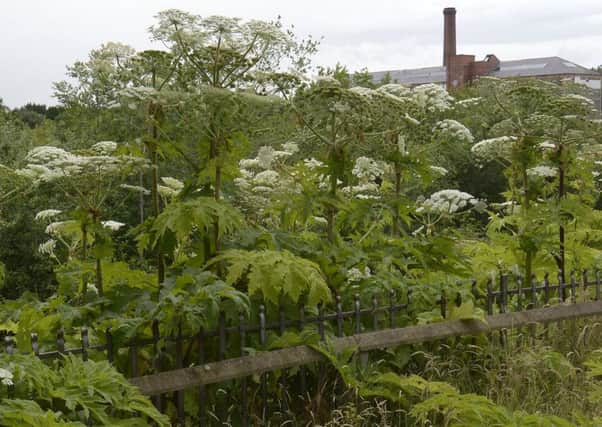Council using funding to tackle toxic Giant Hogweed


The toxic weed has been reported growing across the Upper Bann area.
The species, which has been sighted in areas of Gilford, Lawrencetown and across parts of Craigavon, can be found across the UK.
Advertisement
Hide AdAdvertisement
Hide AdIt usually grows in less accessible places and, in some areas, it is on the increase.
While the council can only spray Giant Hogweed on its own property, it has made provision for non-council property to be treated by people with specialised training.
A spokesperson for Armagh City, Banbridge and Craigavon Council explained how biodiversity funding had been given to Banbridge Council last year.
“Last year Banbridge District Council received funding through the Action for Biodiversity Group from European Regional Development Fund to contribute towards various elements of Biodiversity management throughout the District.
Advertisement
Hide AdAdvertisement
Hide Ad“As Giant Hogweed had been identified in small pockets within the district’s waterways, it was decided to use some of the money towards dedicated chemical spraying training and the purchase of equipment to enable treatment of this evasive species,” said the spokesperson.
“This training involved several community groups, statutory bodies (such as Ireland Waterways) and a number of council staff attending Greenmount for a number of weeks,” she said.
“The dedicated spraying equipment was also purchased by the council and is maintained and stored at our council depot.
“It is available for use by both council staff and trained members of the public following specific spraying requirements.
Advertisement
Hide AdAdvertisement
Hide Ad“The council only has the authority to spray on their own land, however community groups who have had the specialised training have an arrangement to spray any hogweed that is found on non-council owned property within their area.”
Dr Robert McDonald, a leading expert on invasive species at Queen’s, has been warning that it is important to deal with biological invasions like Giant Hogweed quickly and effectively, since 2007.
Giant Hogweed can damage the environment by clogging waterways, killing native wildlife and by carrying exotic diseases, and it can cost thousands of pounds to restore damaged habits and ecosystems.
It is also dangerous for humans to come into contact with Giant Hogweed, as a substance contained within its sap can cause skin to become sensitive to ultra violet light with large, watery and painful blisters appearing.